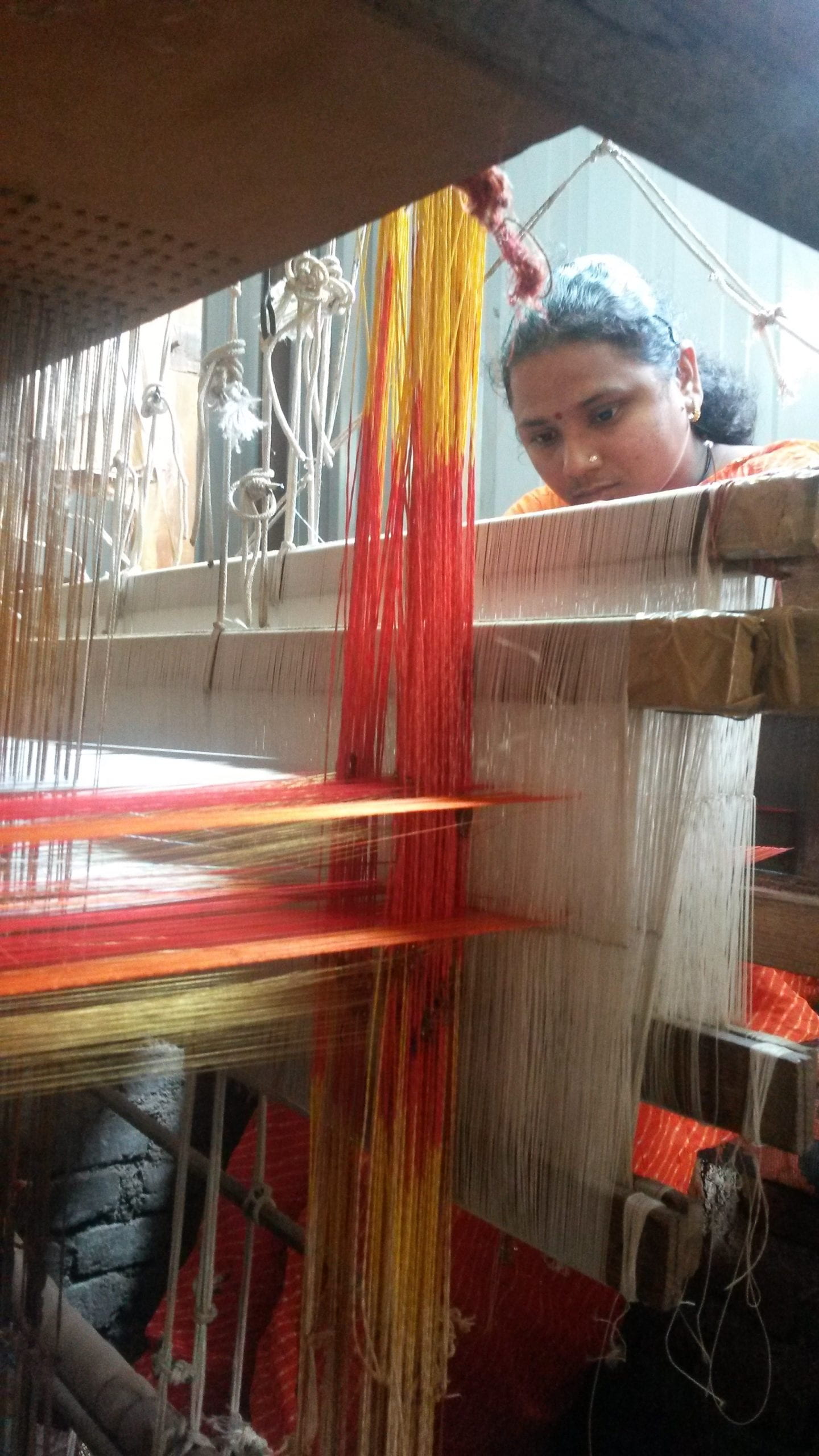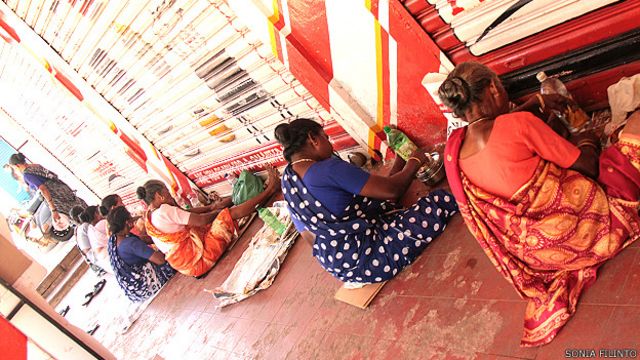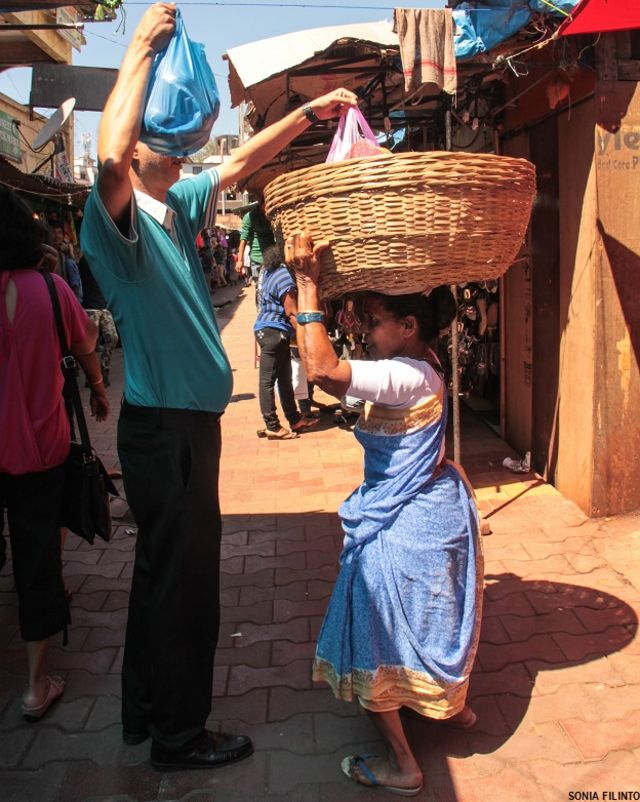 A. Proficiency Level: Intermediate Mid
A. Proficiency Level: Intermediate Mid
B. Objectives: Students will be able to:
- describe activities related to traditional occupations
- ask and answer questions to find out details about a traditional occupation
- identify some of the benefits from having traditional occupations and explain why and how they should be protected.
Language Targets:
- infinitives + postpositions (X-को साफ़ करने के लिए ; X-की रखवाली करने के बिना, X-के बावजूद, के अलावा, etc.)
- infinitives in obligation/compulsion construction — X-को + infinitive + पड़ना (उसको मकान साफ़ करना पड़ता है; उनको दवा लेनी पड़ती है)
- frequentative (आया-जाया करते हैं, बनाया करती है)
Standards: Communication (all 3 modes) and Culture (products, practices and perspectives)
C. Performance Assessment:
- Interpretive: In groups, students guess what the story is about based on pictures from an article (different from another group). Later they read a section from the article and formulate questions related to (a) job description, (b) benefits for community and individuals, (c) impact on environment and preservation, (d) relation to progress (Note: (d) is for higher level differentiation).
- Interpersonal: Jigsaw: In new groups they tell each other their ideas and create a new story combining two ideas from the previous group.
- Presentational: Students assume roles (environmental activist, worker, community leader, etc.) write up and develop a TV show and report “Save these jobs”. Students evaluate peers based on rubrics and provide evidence for each criterion for each group.
D. Learning scenarios:
1. In groups of 3 students brainstorm and guess what story is behind the pictures selected from the article ‘भदेल’ हैं (each student is given one or two different pictures – depends on class size).
2. Teacher provides examples and explains the use of infinitives with postpositions based on group work.
3. Jigsaw — students move to new groups and show their pictures to each other. They report their previous group’s idea about what this story is about. Students negotiate and create a story board with their pictures with at least 3 infinitives.
4. They report to the class their story board. Their peers write down 2 points they have also thought of and 2 points they did not think of.
5. Students read pieces of the article in groups (each group receives only a piece of the article). They circle instances of infinitive use.
6. Students return to their initial group and tell each other what their part of the article is about. To write questions, they use the student generated questions (sample sheet).

गोवा के दक्षिणी शहर मडगांव में महिलाएं ढुलाई का काम करती हैं. इन्हें भदेल कहते हैं.
ये महिलाएं इस पेशे में कई पीढ़ियों से हैं. इनमें अधिकांश की मां या सास भी यही काम किया करती थीं
मडगांव बाज़ार में अब बहुत कम संख्या में ही भदेल रह गई हैं, लगभग एक दर्जन. इन सभी की उम्र 50 साल के आस पास है. अगली पीढ़ी से किसी ने भी इस पेशे को नहीं अपनाया.
मारिया बोर्गीज़ कहती हैं, “इस काम में हमारी लड़कियों की कोई रुचि नहीं है. वे कुछ पढ़ लिख गई हैं इसलिए ऑफ़िस में काम करना चाहती हैं.”
ये महिलाएं सुबह के घरेलू काम निपटा कर, पास के गांवों से बसों में यहां आती हैं. ये सुबह आठ से 10 बजे के बीच आती हैं और शाम 6.30 बजे तक यहां काम करती हैं.
भदेल कुनबिस जनजाति की हैं, जिन्हें गोवा का मूल निवासी माना जाता है. एपाइन आलमीडा बिल्कुल कुनबि स्टाइल के पोशाक पहने हुए हैं. हालांकि कपड़े और उनके रंग पारम्परिक इस्तेमाल किए जाने वाले कपड़ों से अलग हैं, क्योंकि ऐसे कपड़े अब नहीं बुने जाते.
ये भदेल महिलाएं मडगांव बाज़ार में गोदामों और दुकानों पर काम करती हैं. ऐसा माना जाता है कि अतीत में गोवा के अन्य बाज़ारों में भी ये काम करती थीं, लेकिन इसके साक्ष्य बहुत कम हैं, जिनका लोकगीतों में ज़िक्र मिलता है.
जिन लोगों को उनकी सेवाओं की ज़रूरत होती है, वो जानते हैं कि भदेल कहां मिलेंगी, यानी, मडगांव बाज़ार में दुकानों की क़तार में एक पुरानी दुकान के सामने.
यह ईसाई त्यौहार का मौसम है, बाज़ार में गहमागहमी कम रहती है. हालांकि यह व्यसाय के लिए मंदा समय है, लेकिन इससे इन महिलाओं को थोड़ा आराम मिल जाता है.
1990 के दशक के अंत में जब कोंकण रेलवे की शुरुआत हुई तो पड़ोसी राज्यों से सस्ते मज़दूरों का आना शुरू हुआ, जिससे इन महिलाओं को कड़ी प्रतिद्वंद्विता का सामना करना पड़ा.
स्थानीय व्यापारी कहते हैं कि वो भदेलों पर आंख मूंद कर भरोसा करते हैं और उन्हें बैंक में भारी मात्रा में पैसे जमा करने के लिए भेजते हैं.
ये महिलाएं एक दिन में 50 से 200 रुपए तक कमाती हैं. एक औसत आकार का शॉपिंग बैग ले जाने का उन्हें तीन रुपये मिलता है, स्टील की एक आलमारी ले जाने का 50 रुपए मिलता है, जिन्हें ले जाने वाली सभी महिलाओं में बांट दिया जाता है और 50 किलो का सामान ढोने के लिए 20 रुपए मिलते हैं.
एलपाइन अलमीडा एक दुकानदार के लिए सामान से भरा टोकरा ले जा रही हैं.
गोवा में दोपहर बाद जब दुकानें बंद हो जाती हैं तो उनके सामने भदेल महिलाएं भोजन करती हैं. और यह बिल्ली भोजन के इस समय को कभी नहीं भूलती.
 ये महिलाएं भोजन के बाद थोड़ा आराम करती हैं और इस समय उन्हें काम के लिए बहुत कम ही कहा जाता है.
ये महिलाएं भोजन के बाद थोड़ा आराम करती हैं और इस समय उन्हें काम के लिए बहुत कम ही कहा जाता है.
सत्तर साल की रीता कमारा इन भदेल महिलाओं में सबसे बुज़ुर्ग हैं. वह बीड़ी पीती हैं.
साल 2011 में गोवा सरकार का उन भदेल महिलों की सेवाओं पर ध्यान गया, जो पिछले 25 साल से इस पेशे में हैं. उन्हें एकमुश्त 25,000 रुपये का मानदेय दिया गया.
वरिष्ठ नागरिकों की पेंशन स्कीम ये महिलाएं आवेदन कर सकती हैं, लेकिन भदेल स्वाभिमानी मज़दूर हैं और मदद लेने में उन्हें झिझक होती है.
कुछ भदेल महिलाओं को चश्मा लग चुका है लेकिन काम के समय असुविधा के चलते वो इसे नहीं पहनतीं.
काम के बाद जब घर लौटने का समय होता है तो पॉलिन अलमीडा का चश्मा निकल आता है.retrieved from http://www.bbc.com/hindi/india/2015/04/150331_bhadels_women_porters_goa_sr
|
|
7. Students go back to jigsaw groups and orally ask and answer each other’s questions to figure out what is in the section they did not read.
8. Teacher provides explanation of the compulsory construction X-को + infinitive + पड़ना and compares it with the other two constructions. (X-को + infinitive + होना or X-को + infinitive + चाहिए)
9. In groups students do research and each prepares a presentation on a traditional type of occupation to use during the discussion:
- Role: Journalist, worker, businessperson, etc.
- Audience: TV show “पेशा बचाओ”, Funded by the Tata Foundation
- Format: Presentation with photos and oral description
- Task: Develop the presentation in order to convince the Tata Foundation to protect traditional jobs and create infrastructure.
Checklist for each student:
- Describe at least 5 benefits (लाभ, फ़ायदा)
- आर्थिक – economic
- सामाजिक – societal
- पर्यावरण से सम्बंधित – environmental
- संस्कृति और पारम्परिक दस्तकारी के संरक्षण से सम्बंधित – preservation of cultural heritage, etc.
- Incorporate 15 new words (highlight them in yellow)
- Use 3 infinitives with postposition and 5 verbs in the compulsory constructions (highlight in blue).
- Include an appropriate opening and closing statement.
- Folk Arts and Crafts
- Clay Pots
- Sugar cane
- Worm nursery
- Ayurvedic medicine making
- Carpet making: 11.43-14.49
10. Each group sits in front of the class and the other groups ask ‘yes’ or ‘no’ questions to discover what the occupation is (similar to the 20 Questions Game). When peers guess right (group that guesses right receives a point) the group adds what was not covered by the questions (teacher awards points for interesting and well-explained benefits).
11. Teacher introduces frequentative aspect – meaning, form and use (along with the relevant adverbs बार-बार, अक्सर, हर दिन, etc.)
12. Homework: Students watch https://www.youtube.com/watch?v=ryS63hib2Gg. They expand their report with 15 more sentences using the three new language structures (5 sentences each) in the context of the video.
Follow-up suggestion: More Performance Tasks or Traditional Occupations and the Environment


